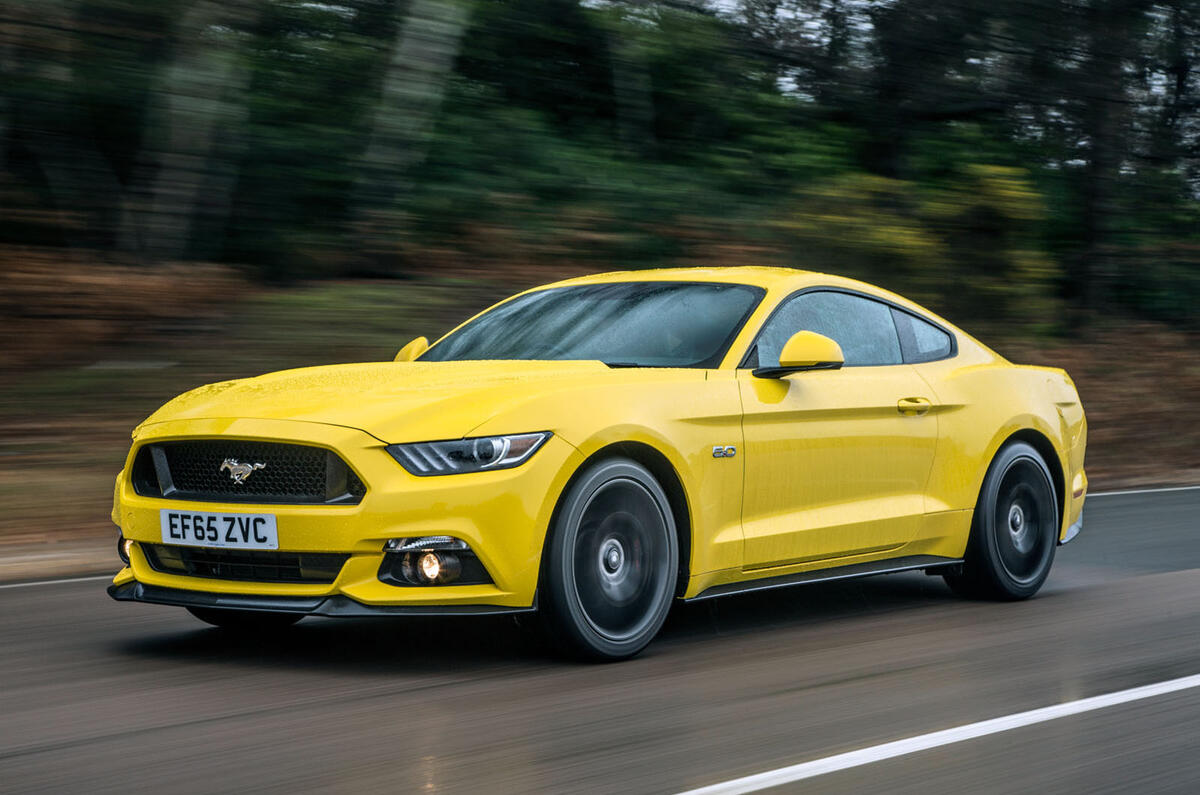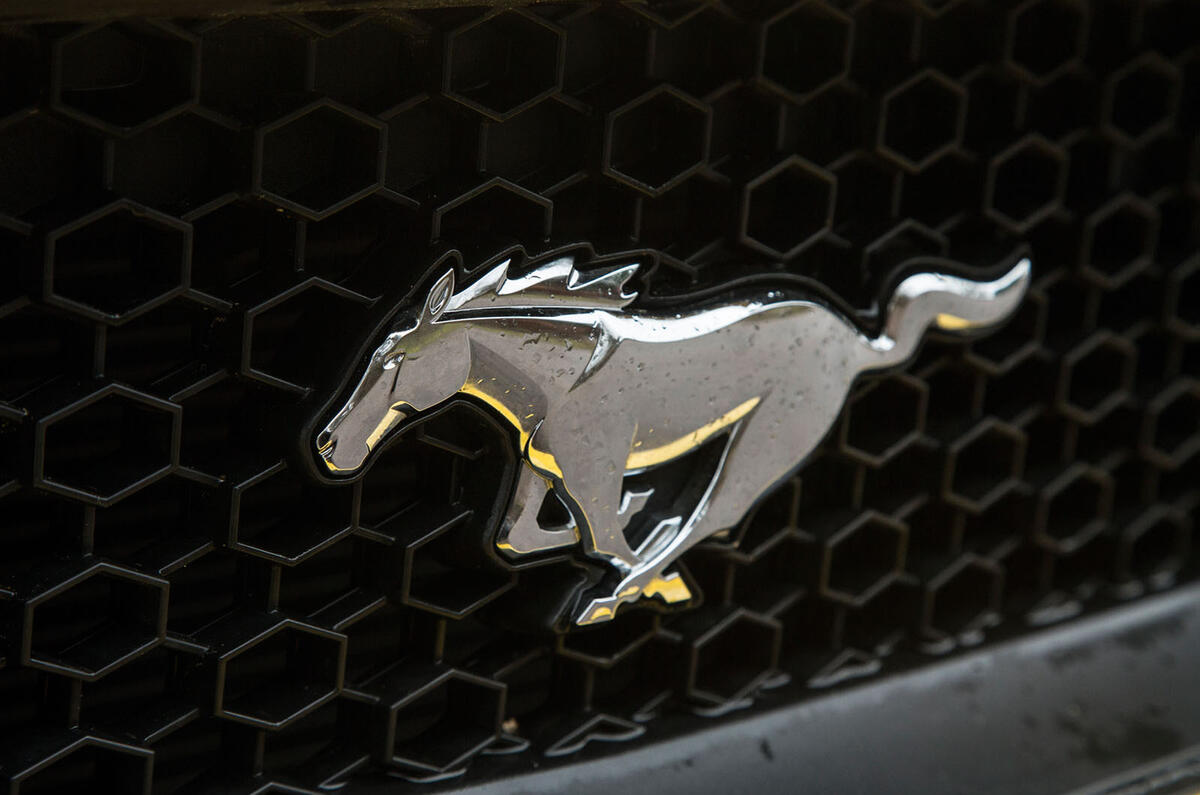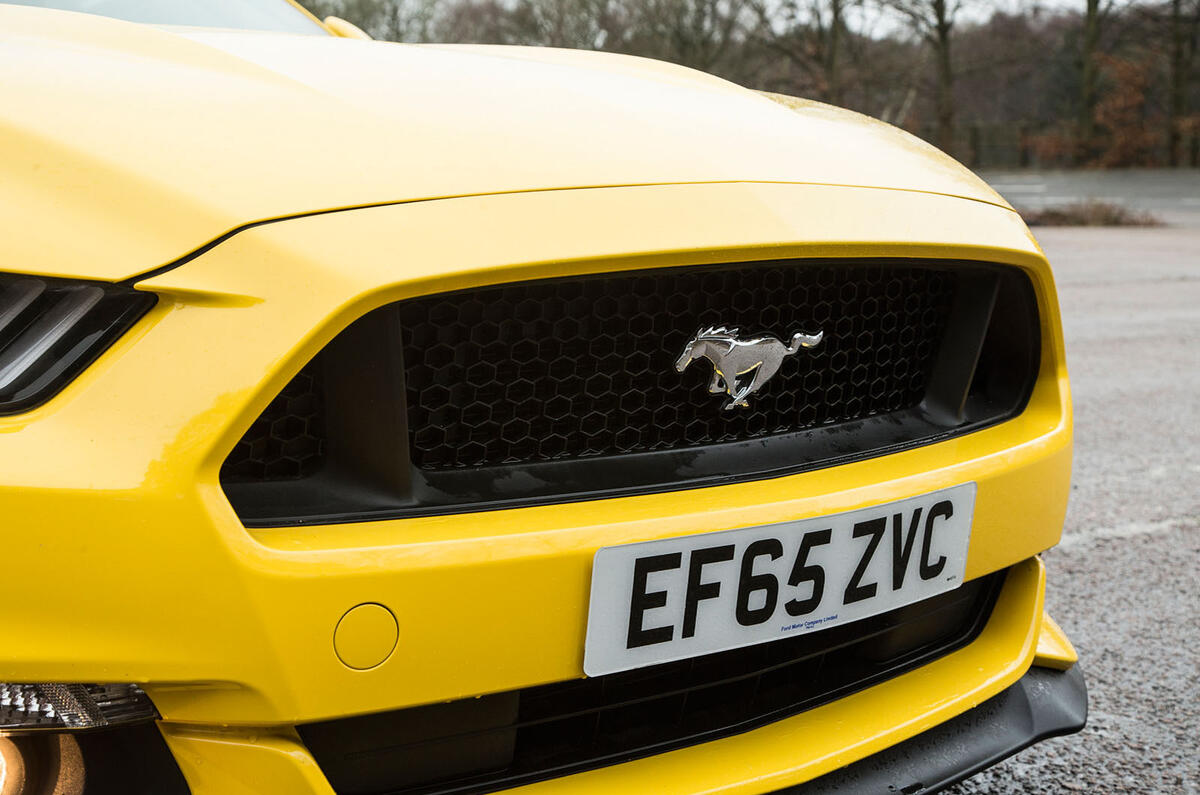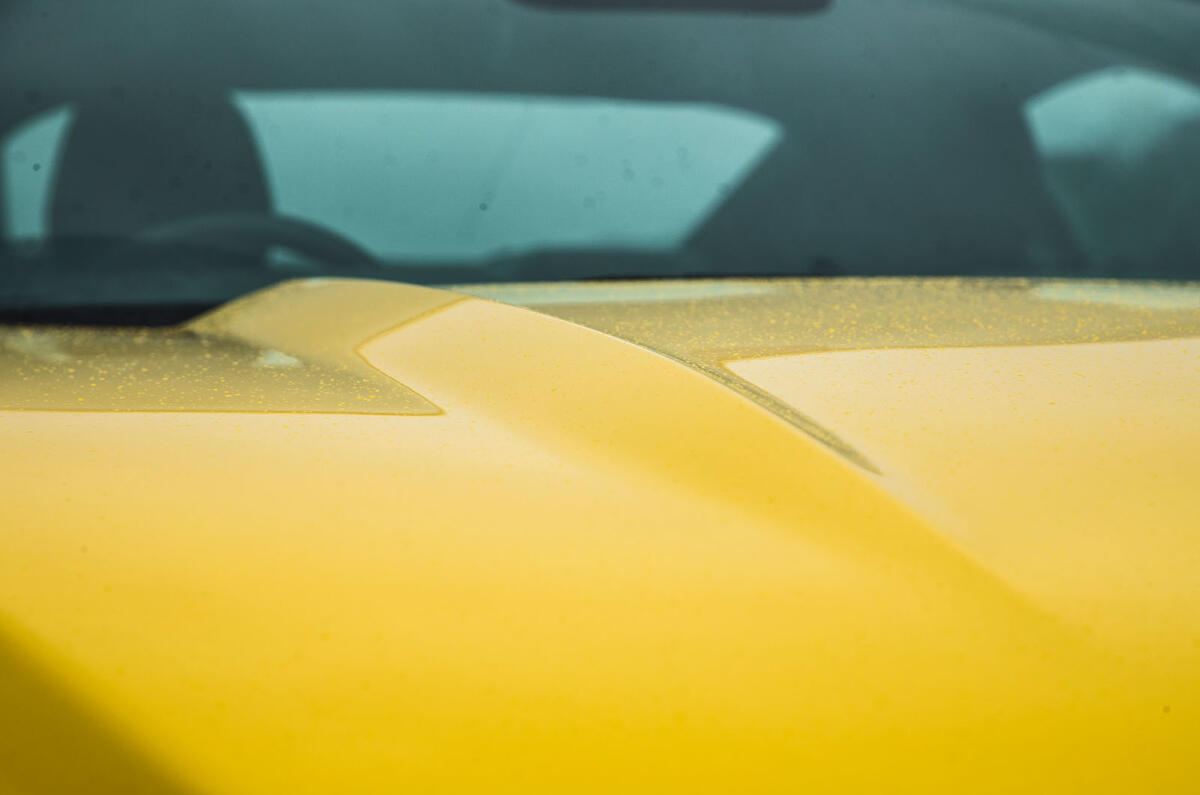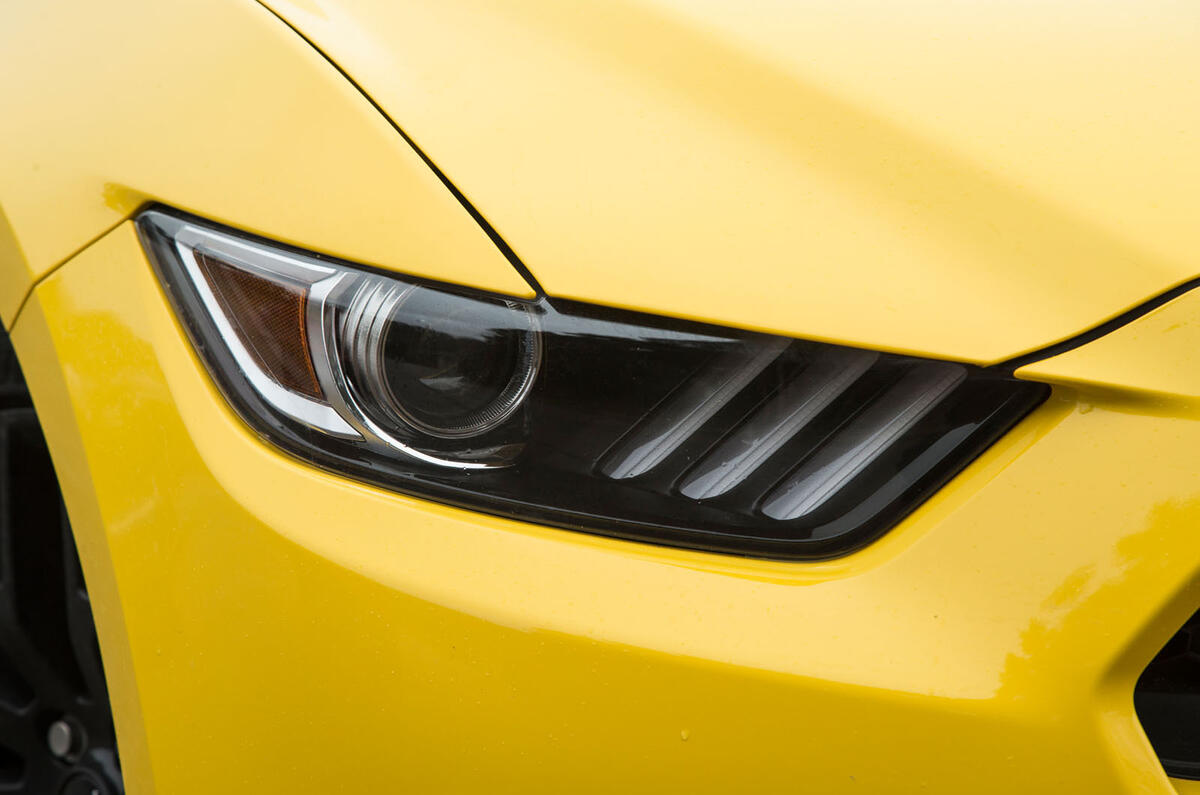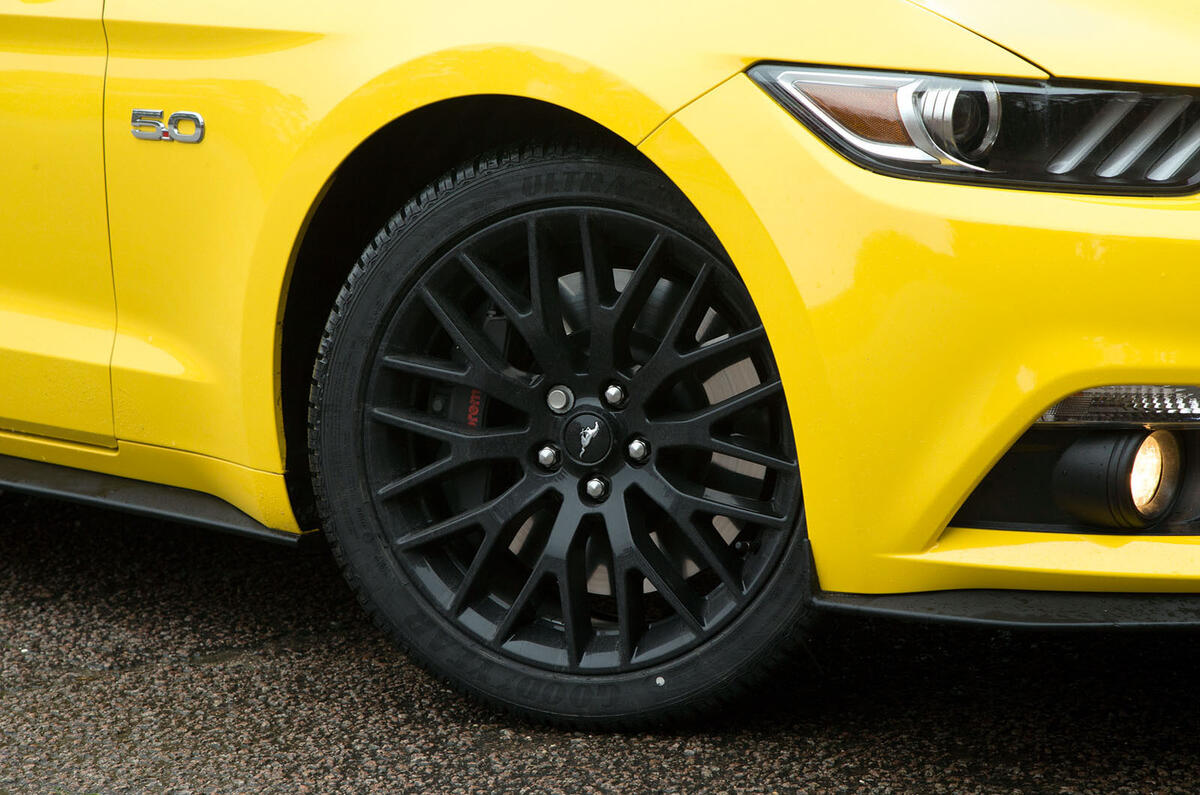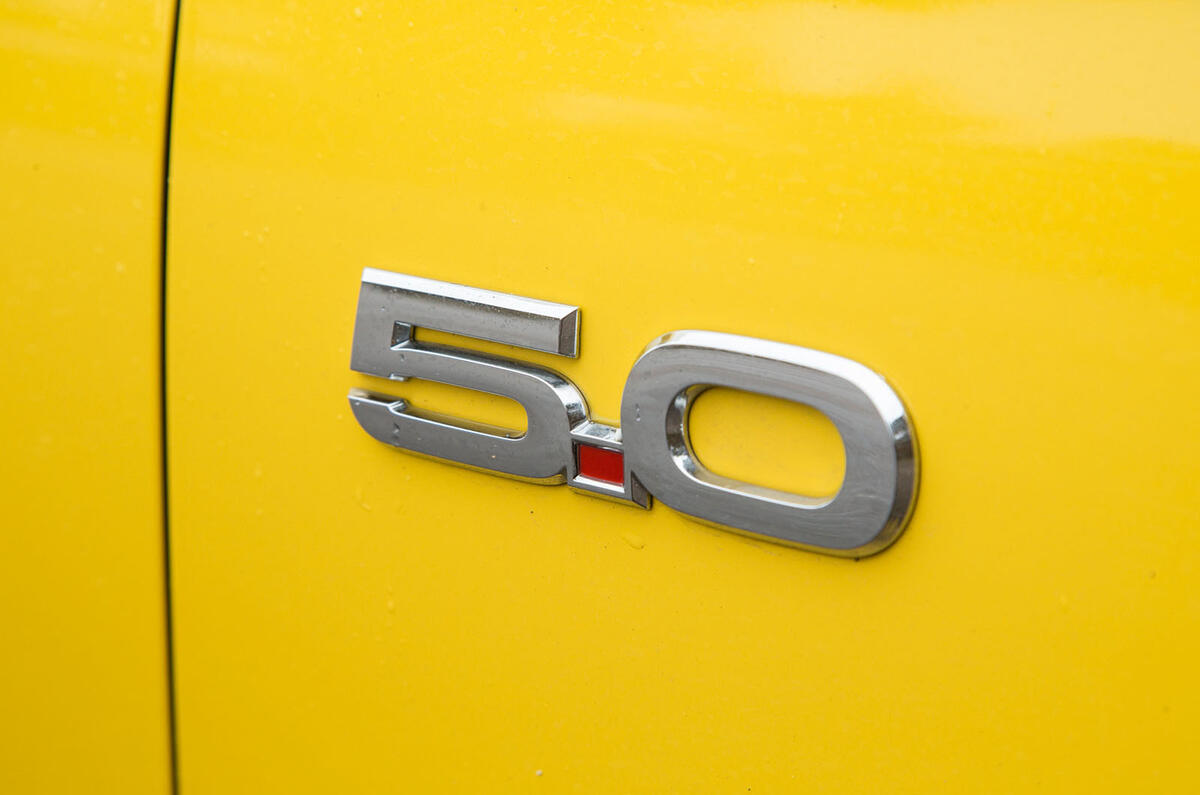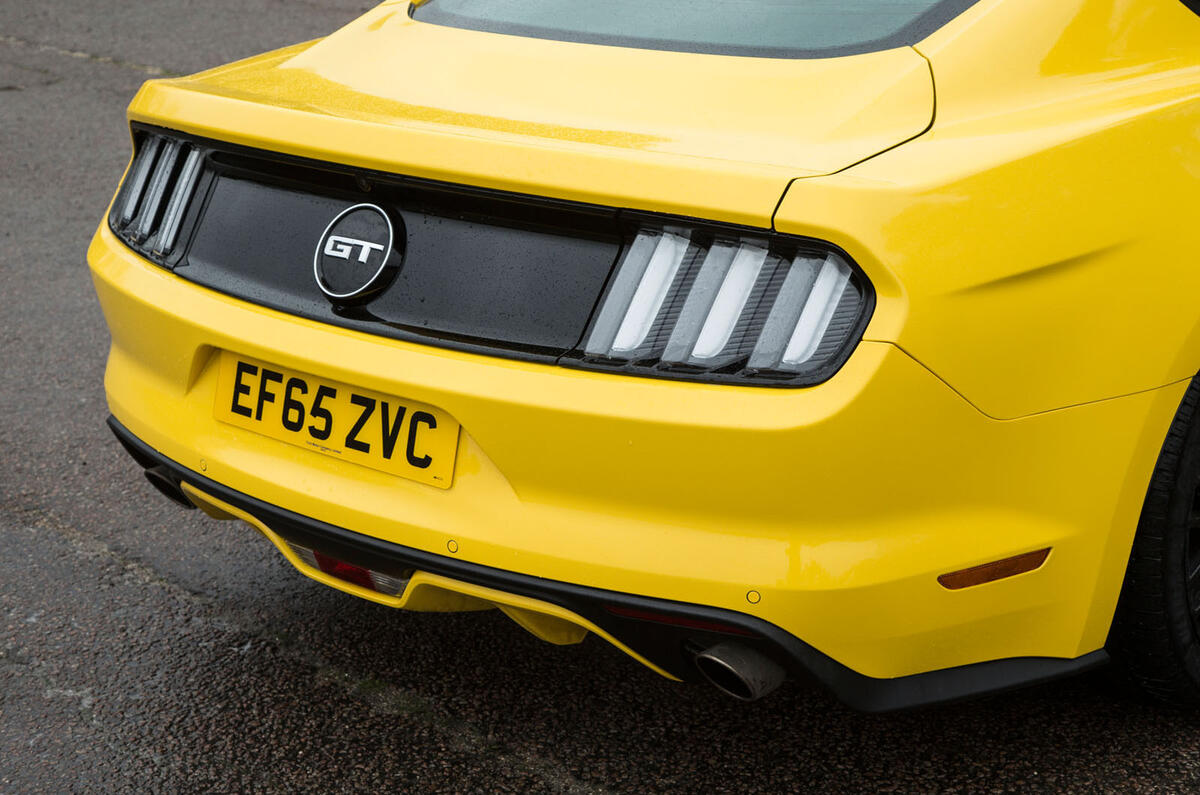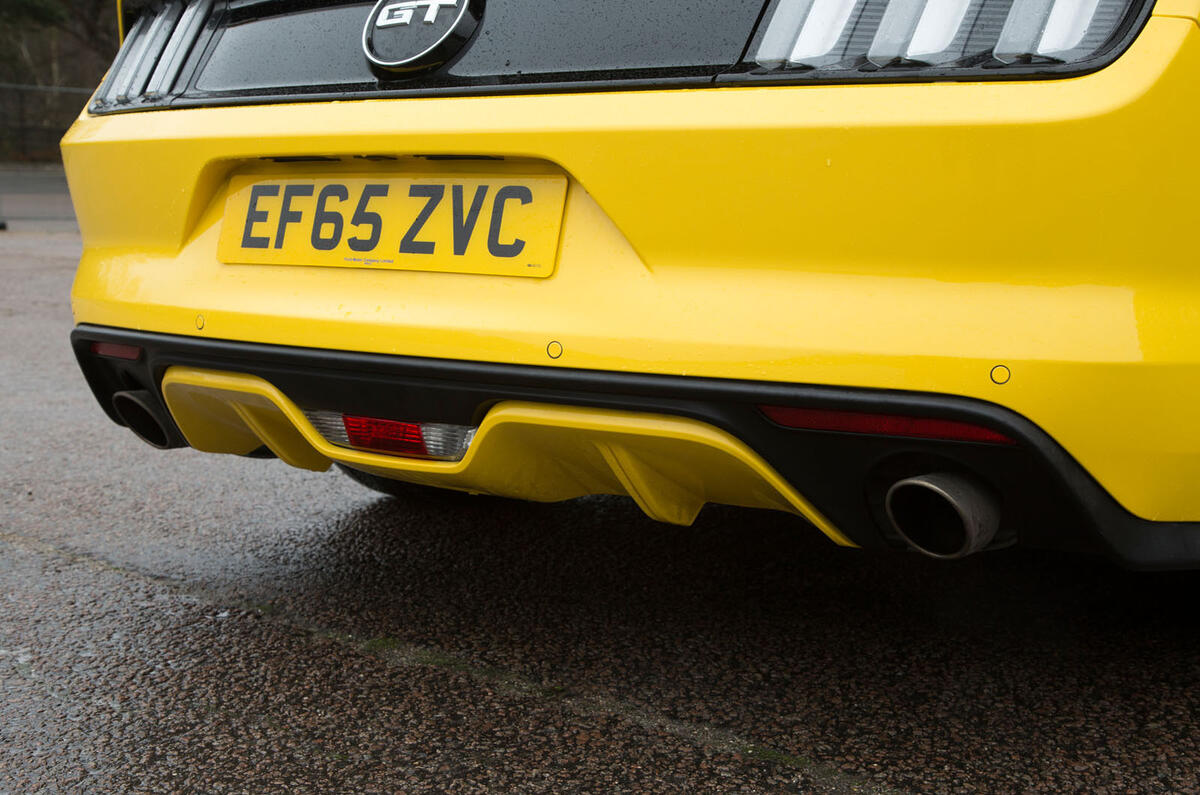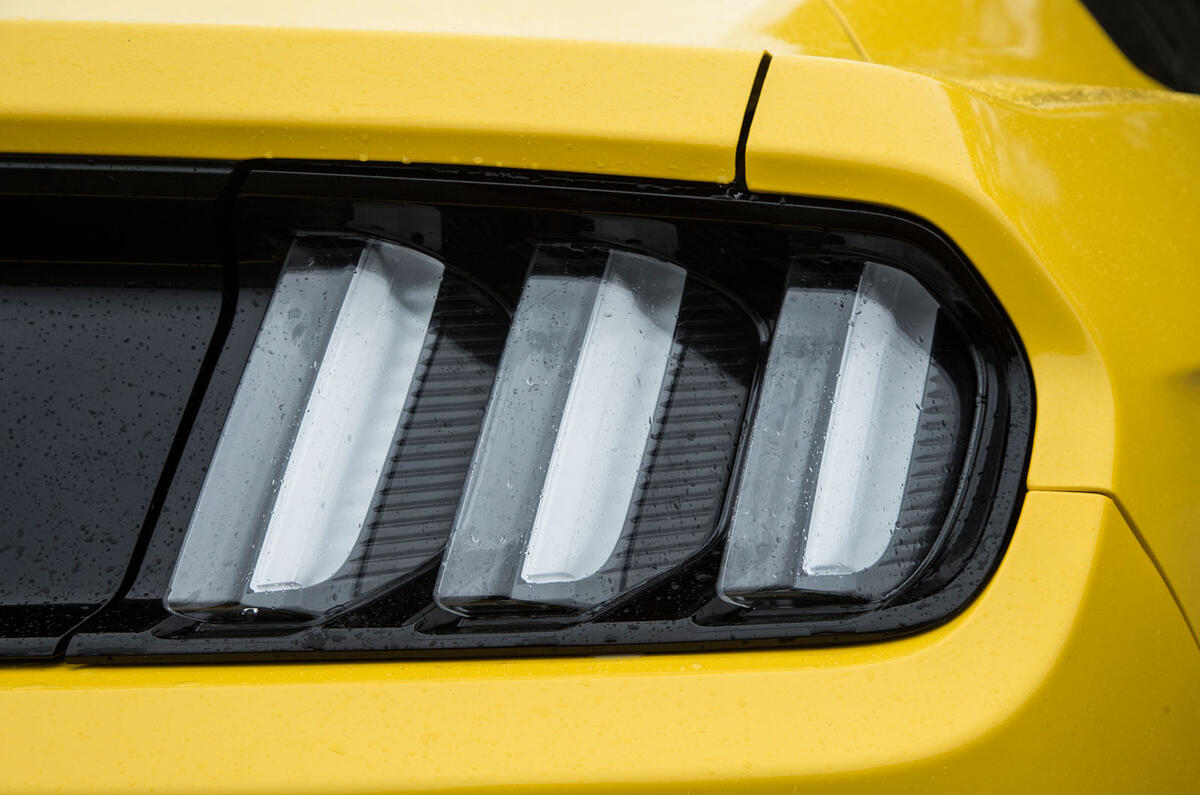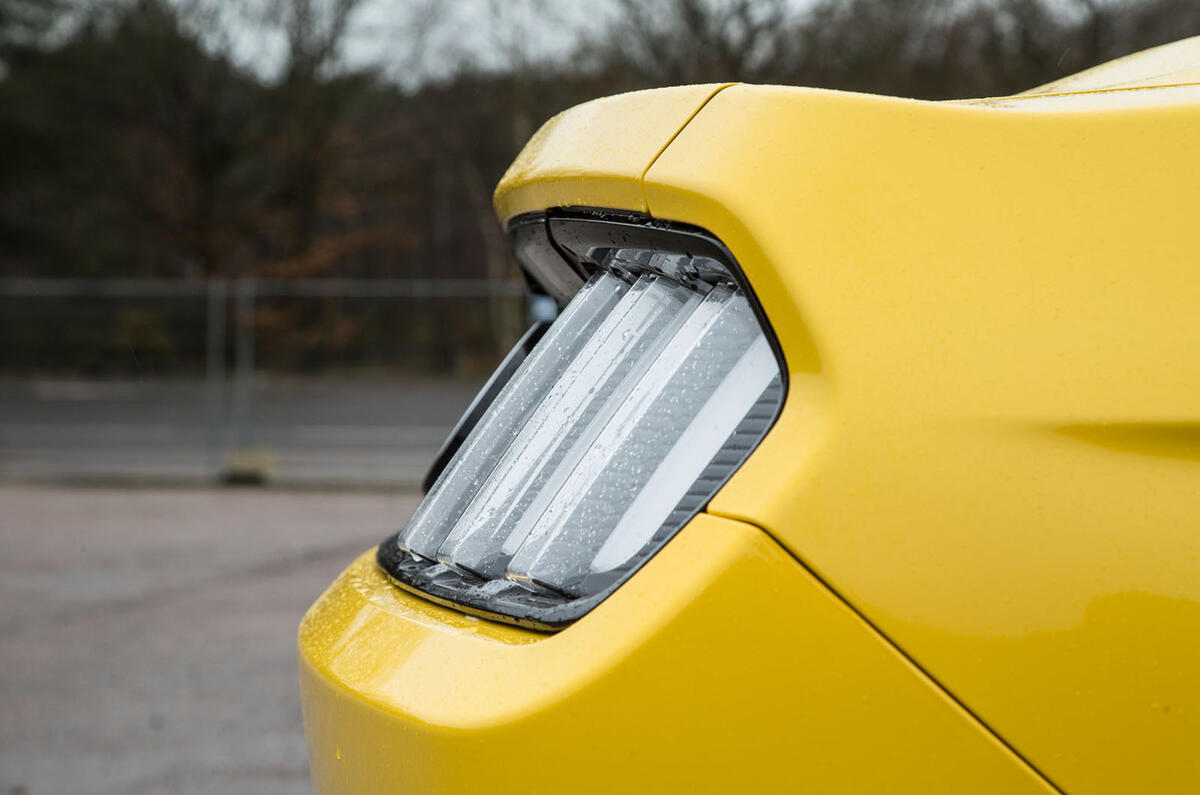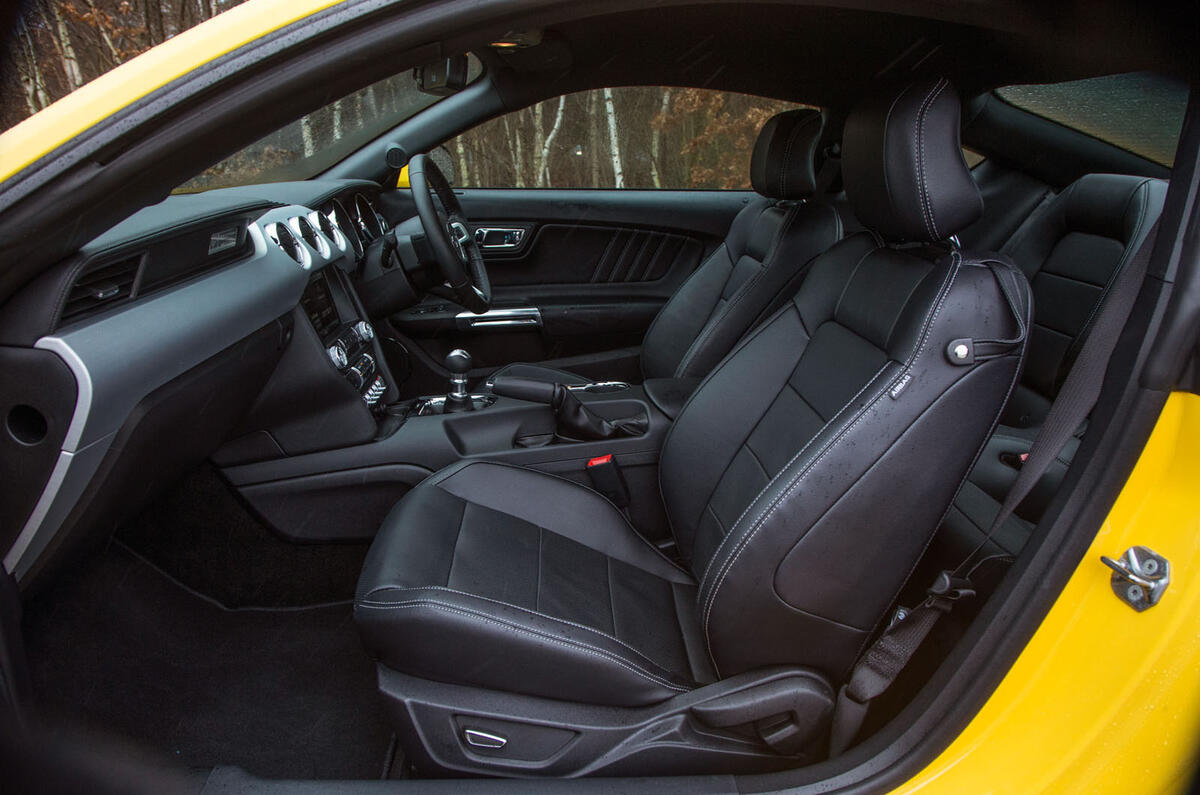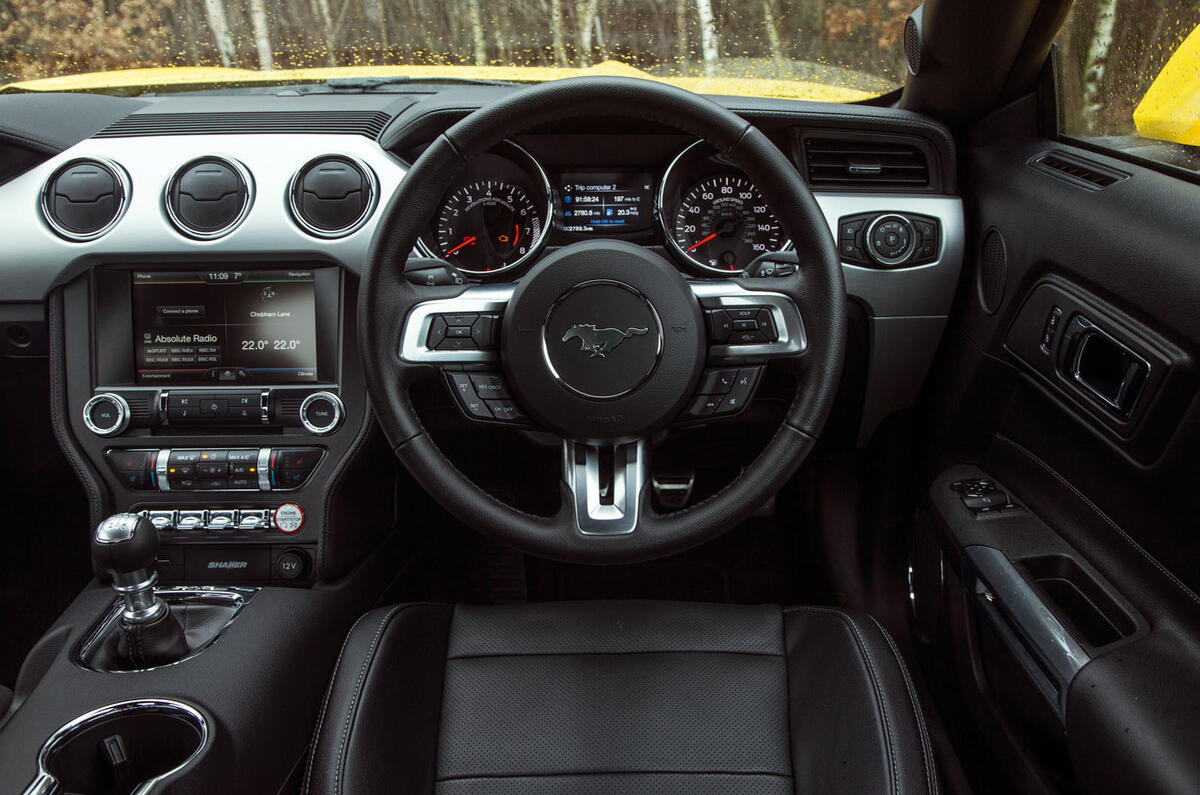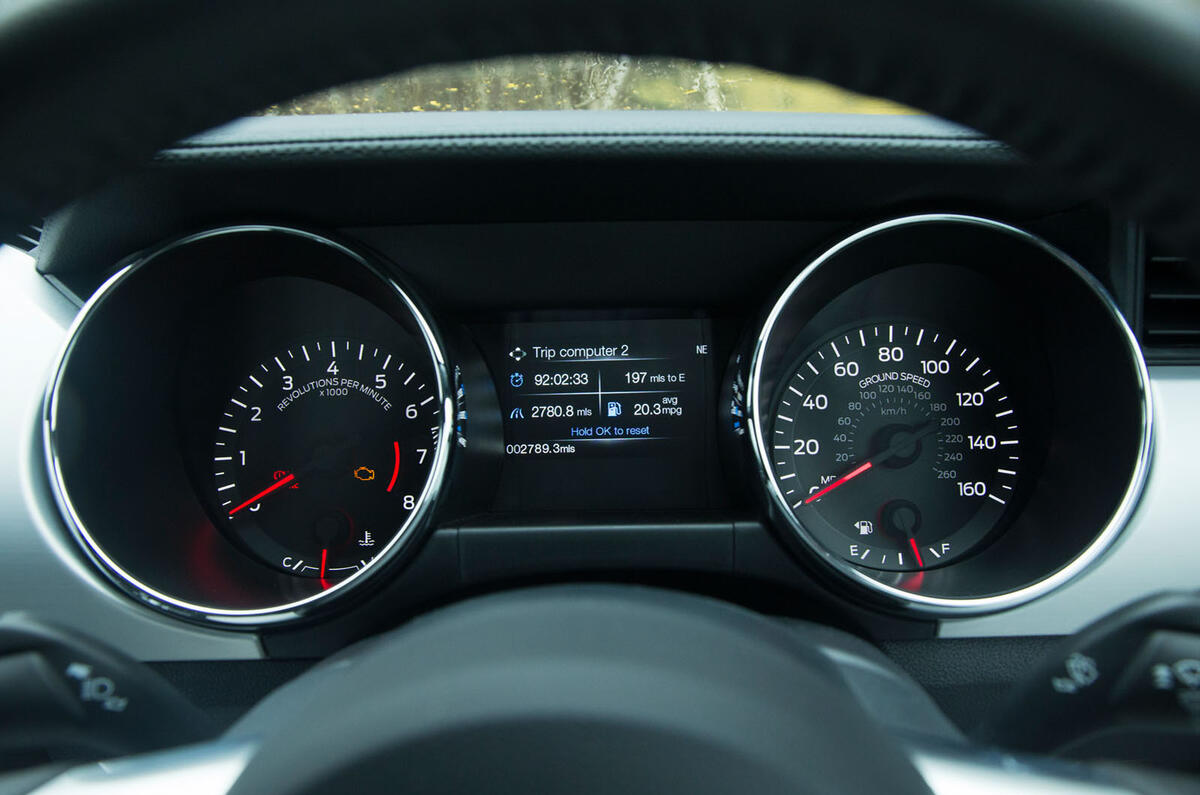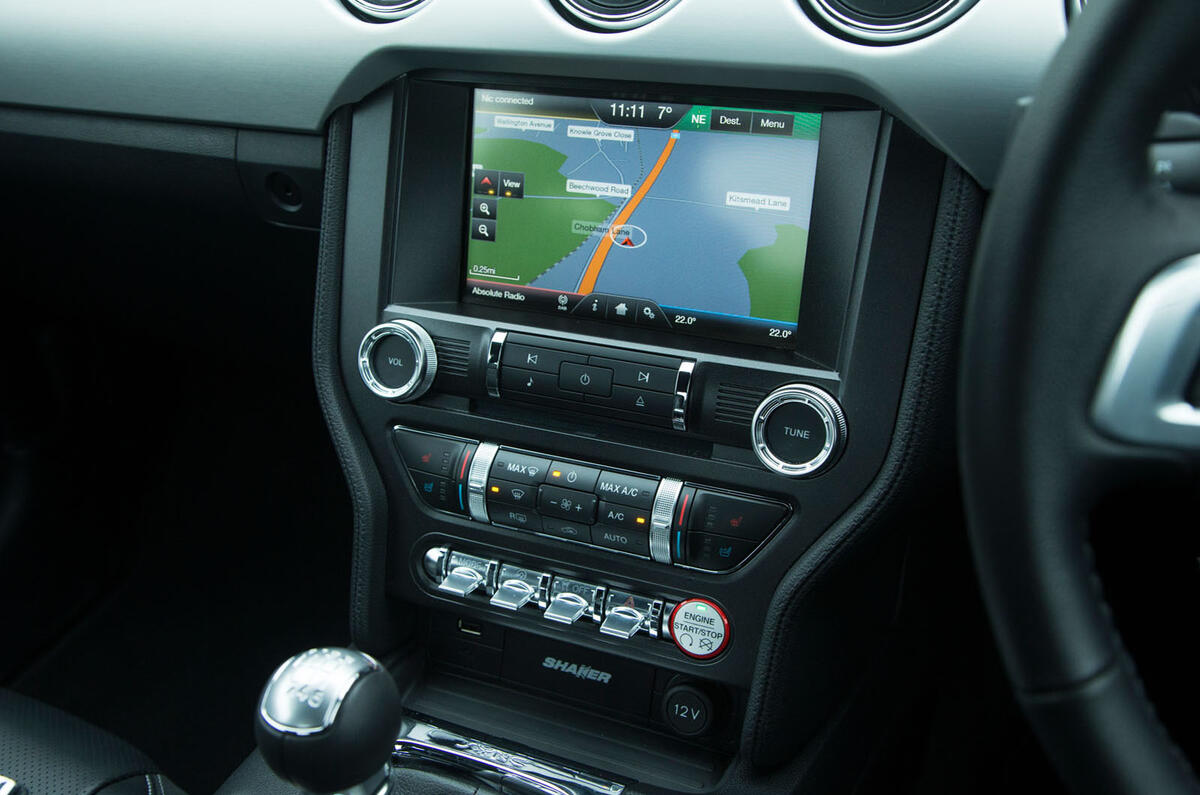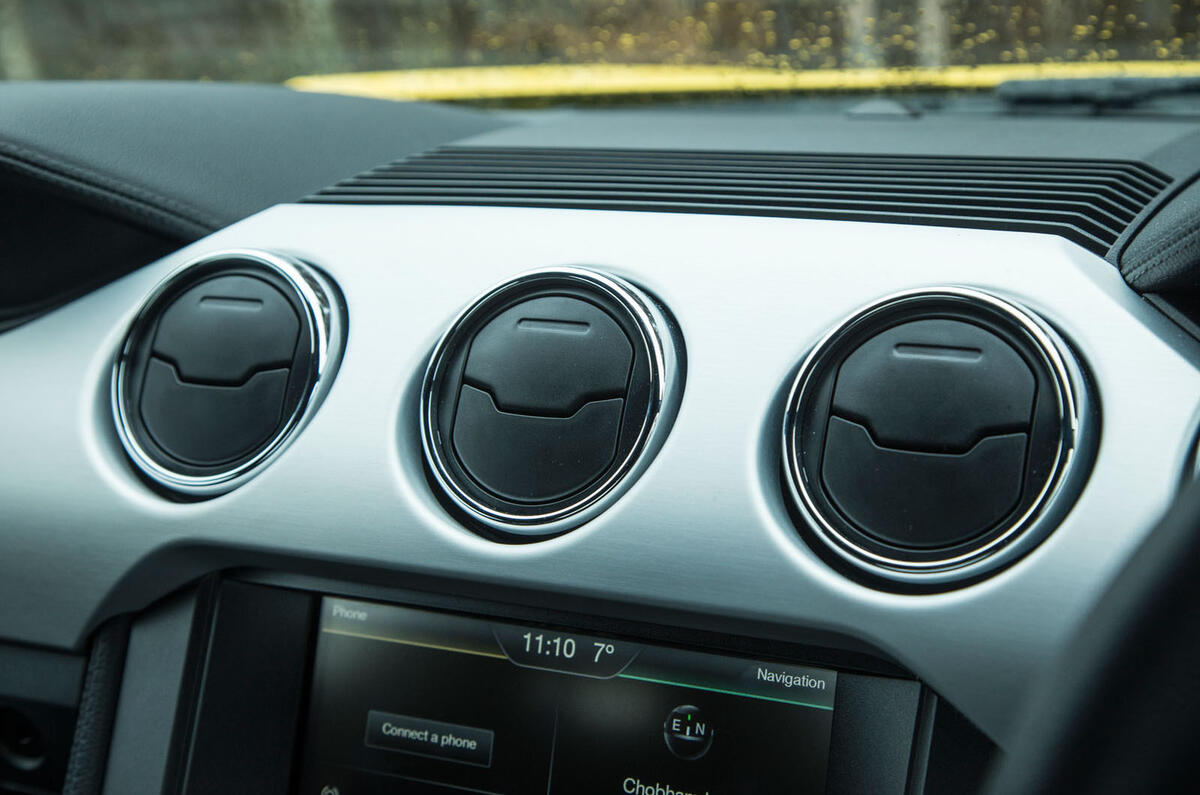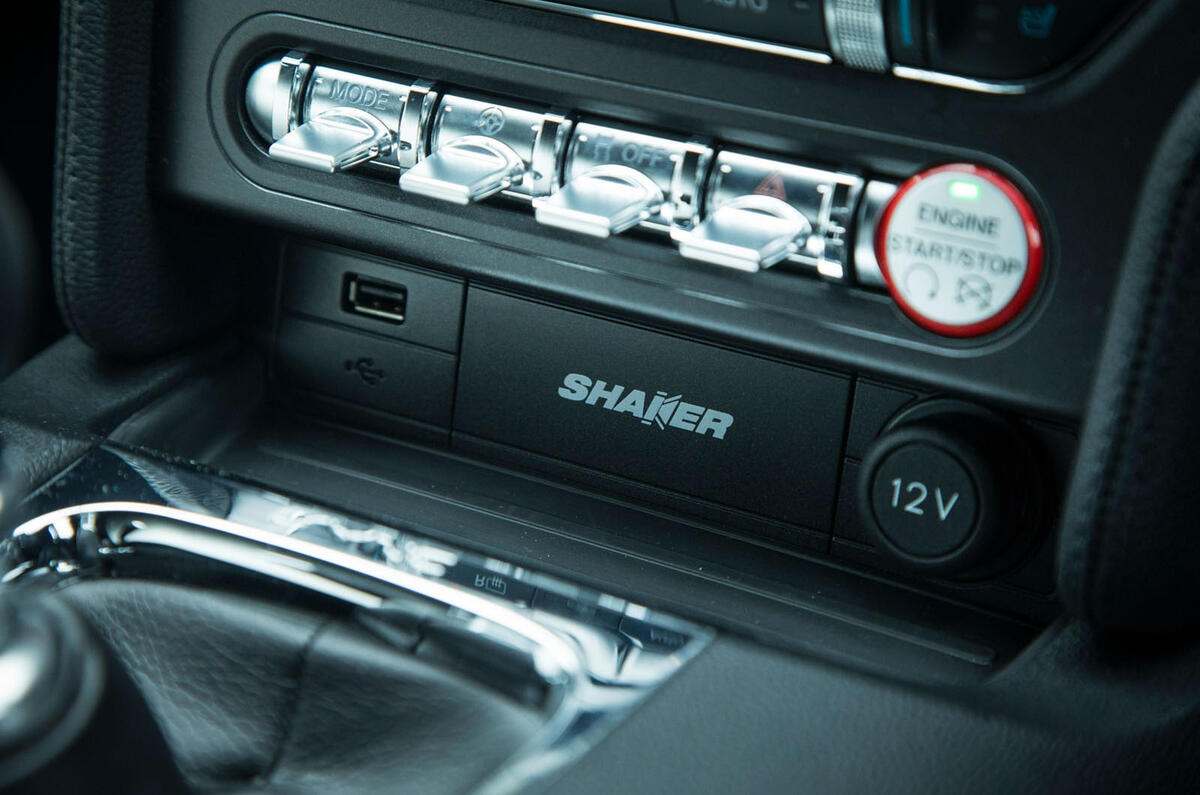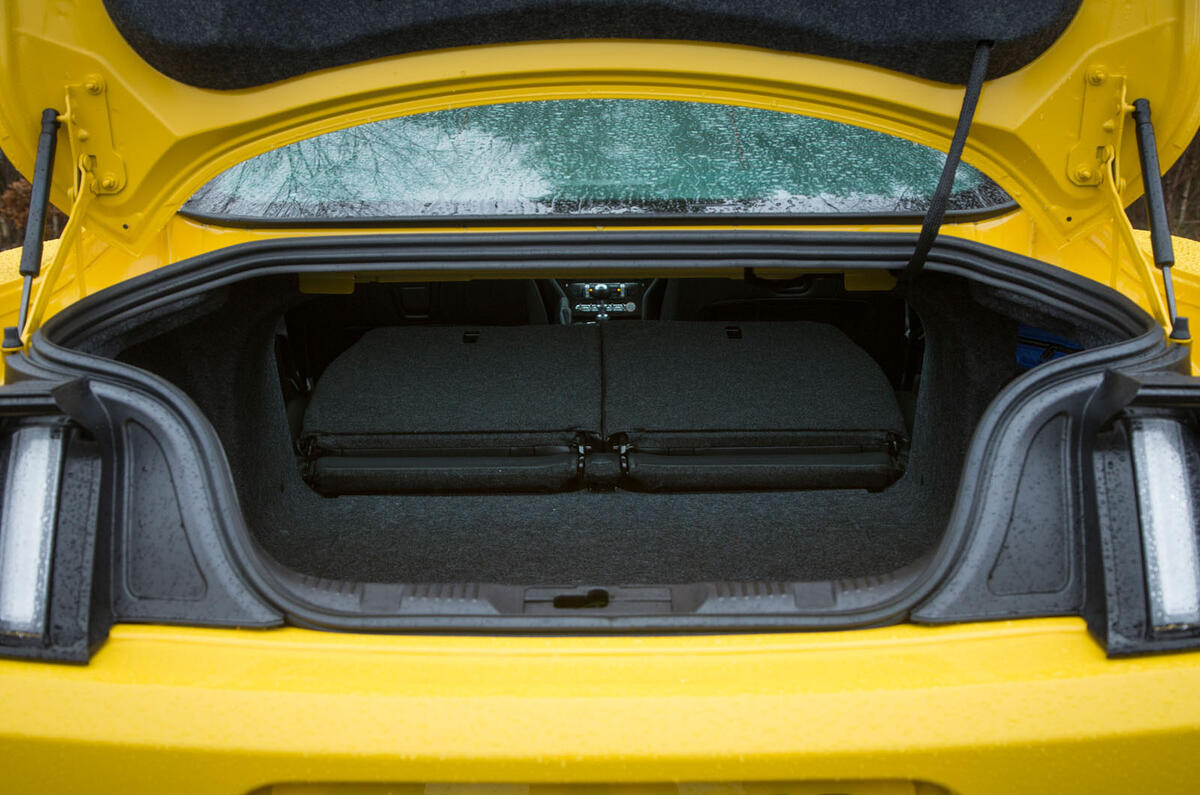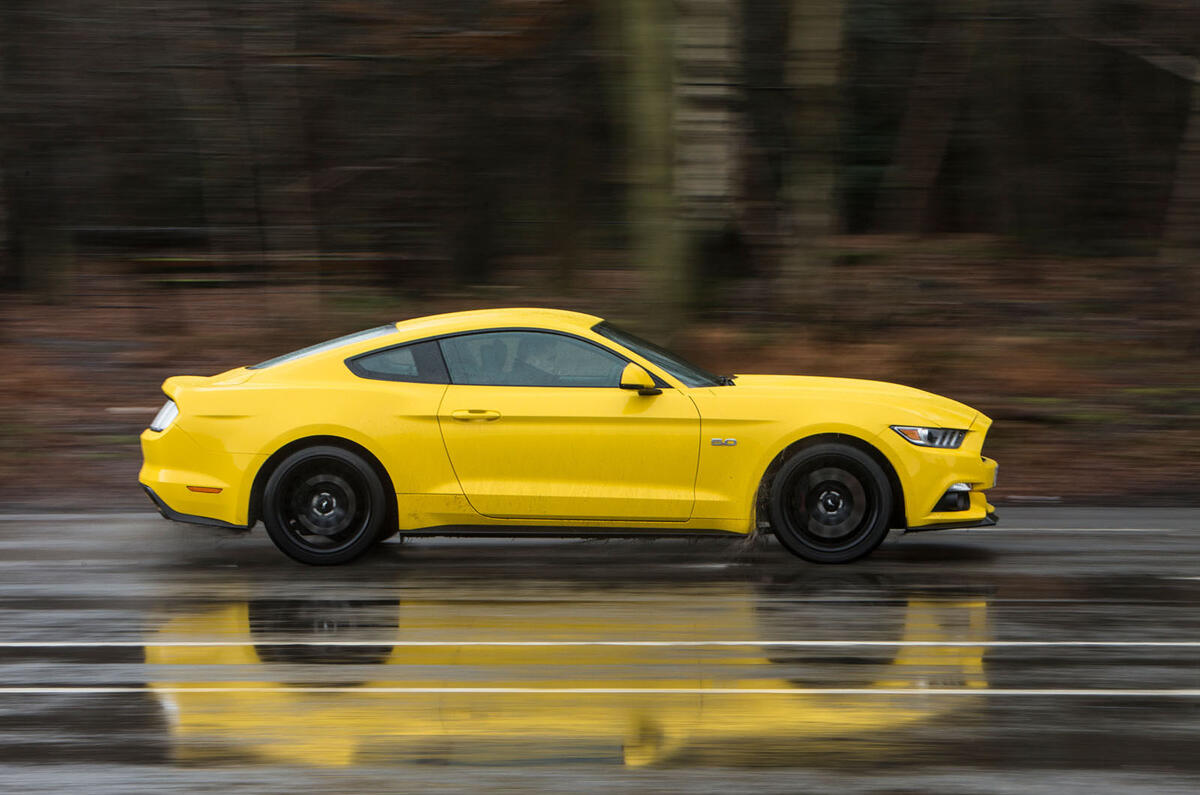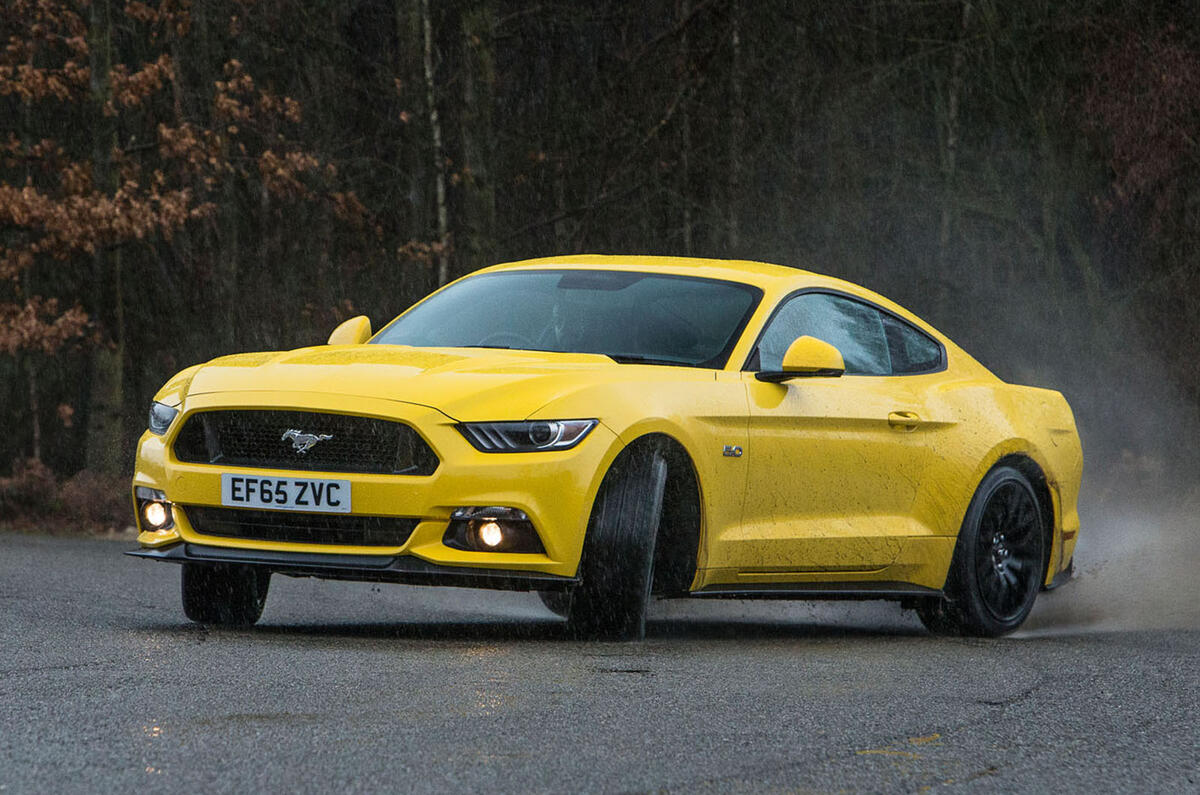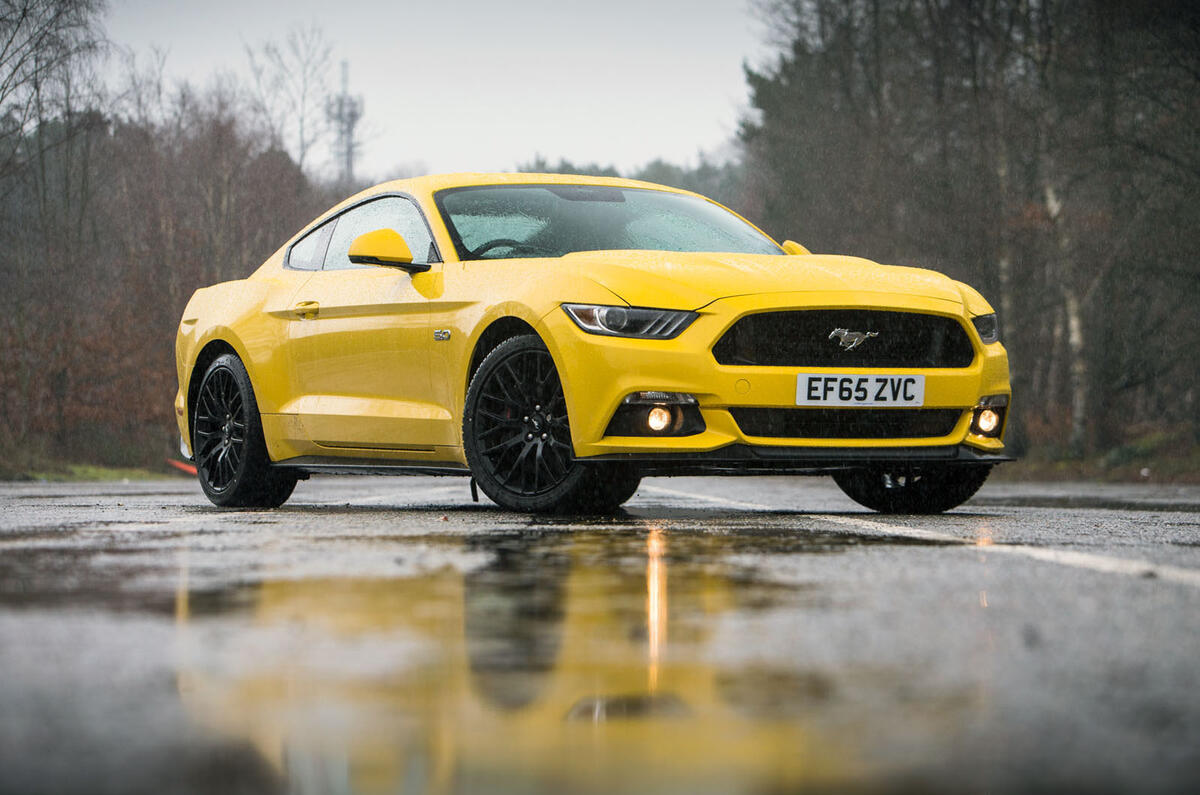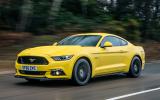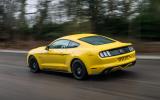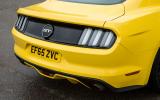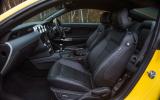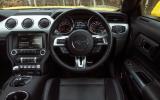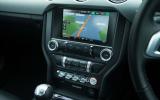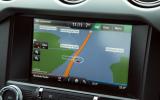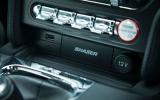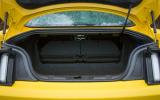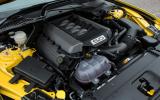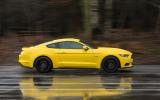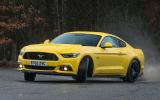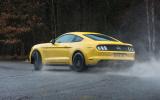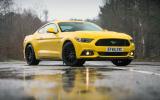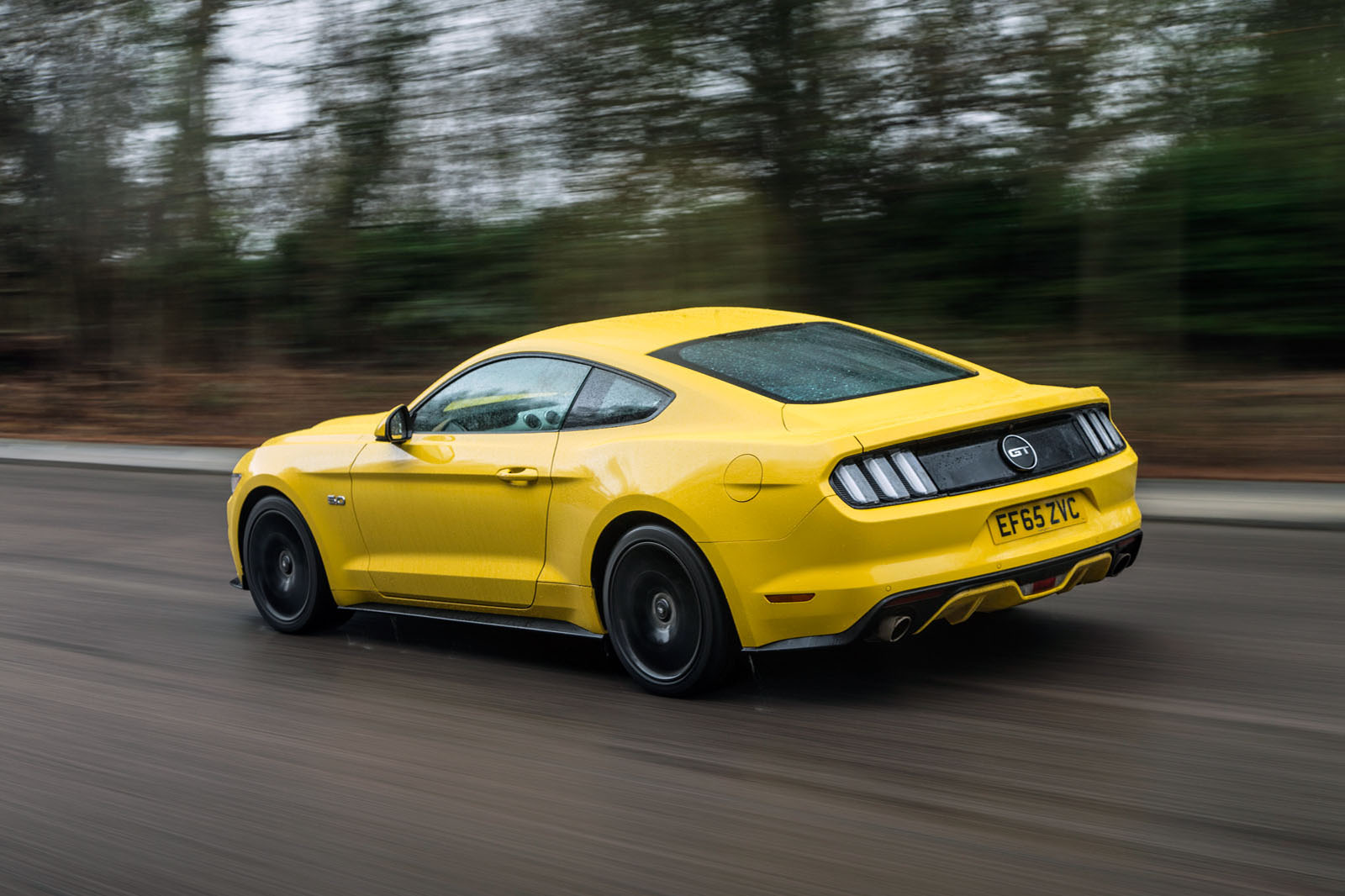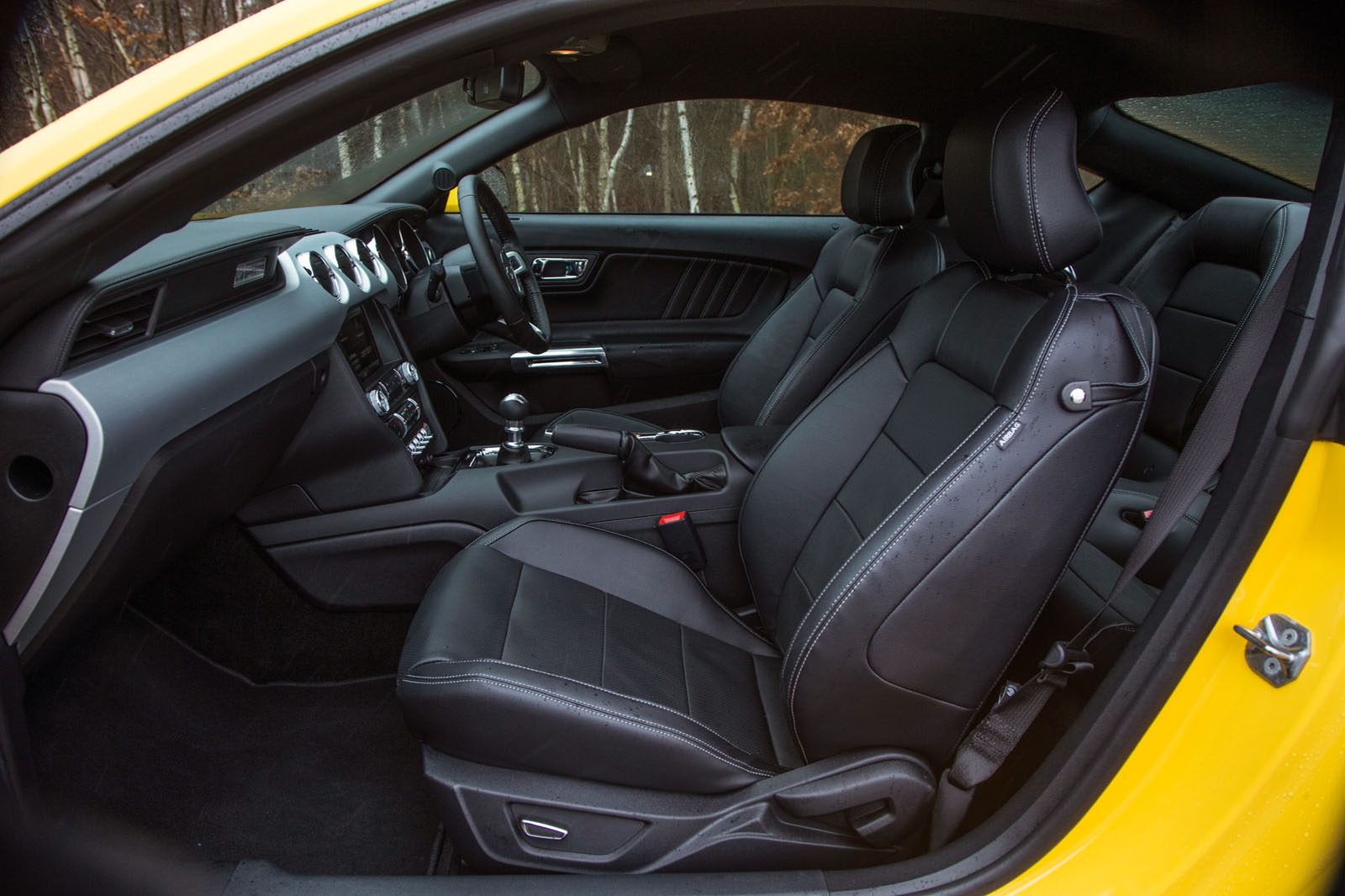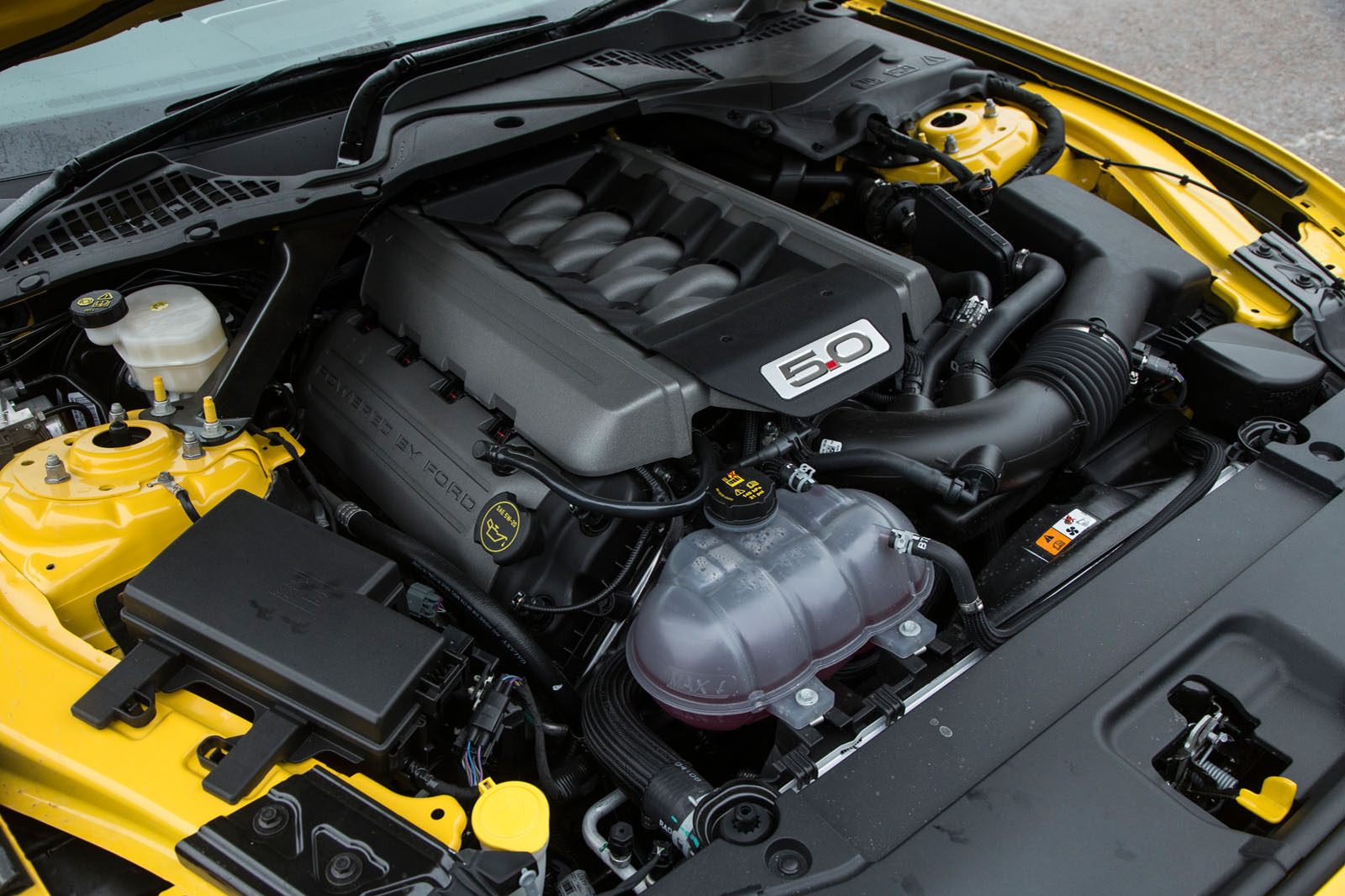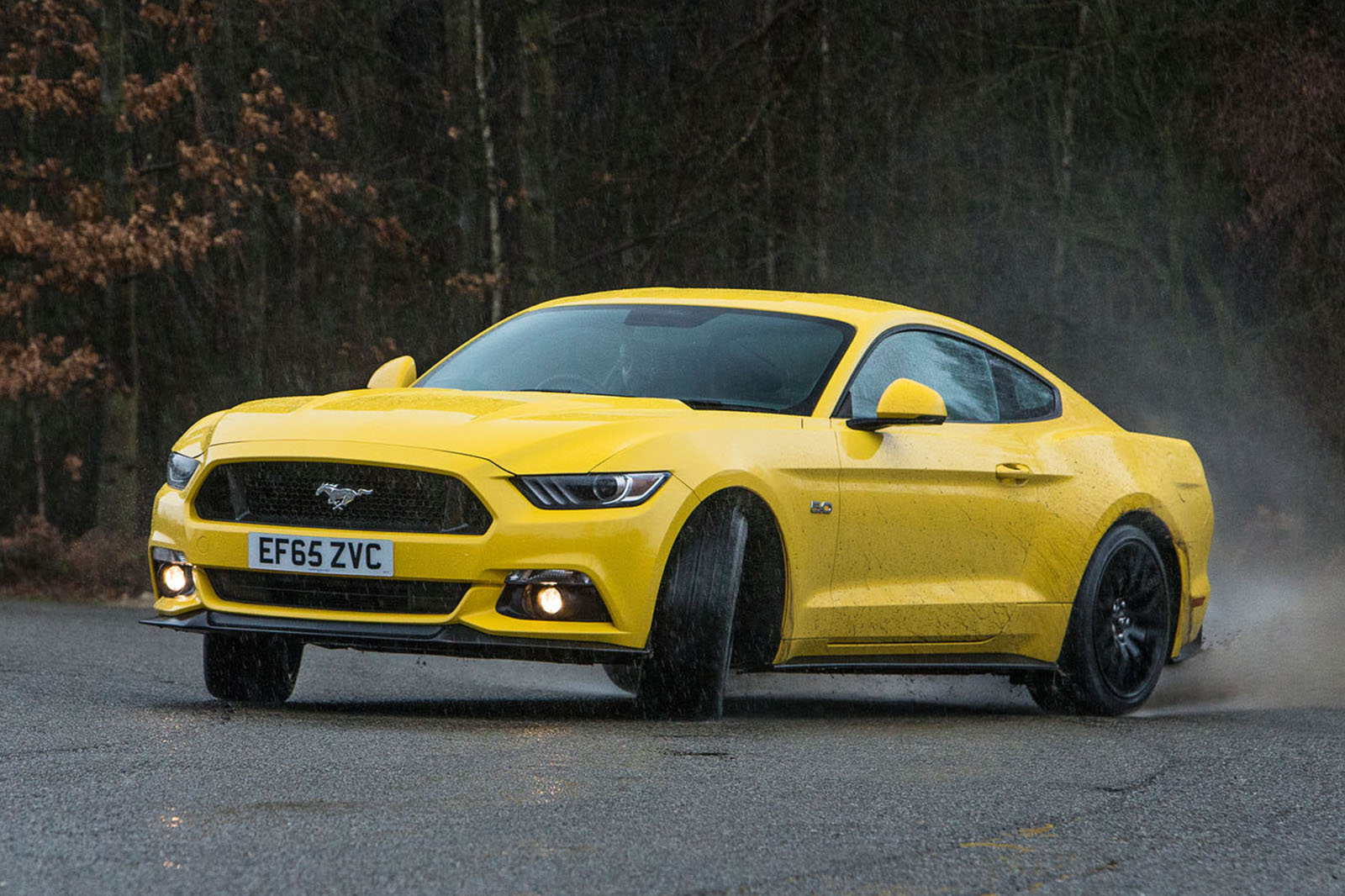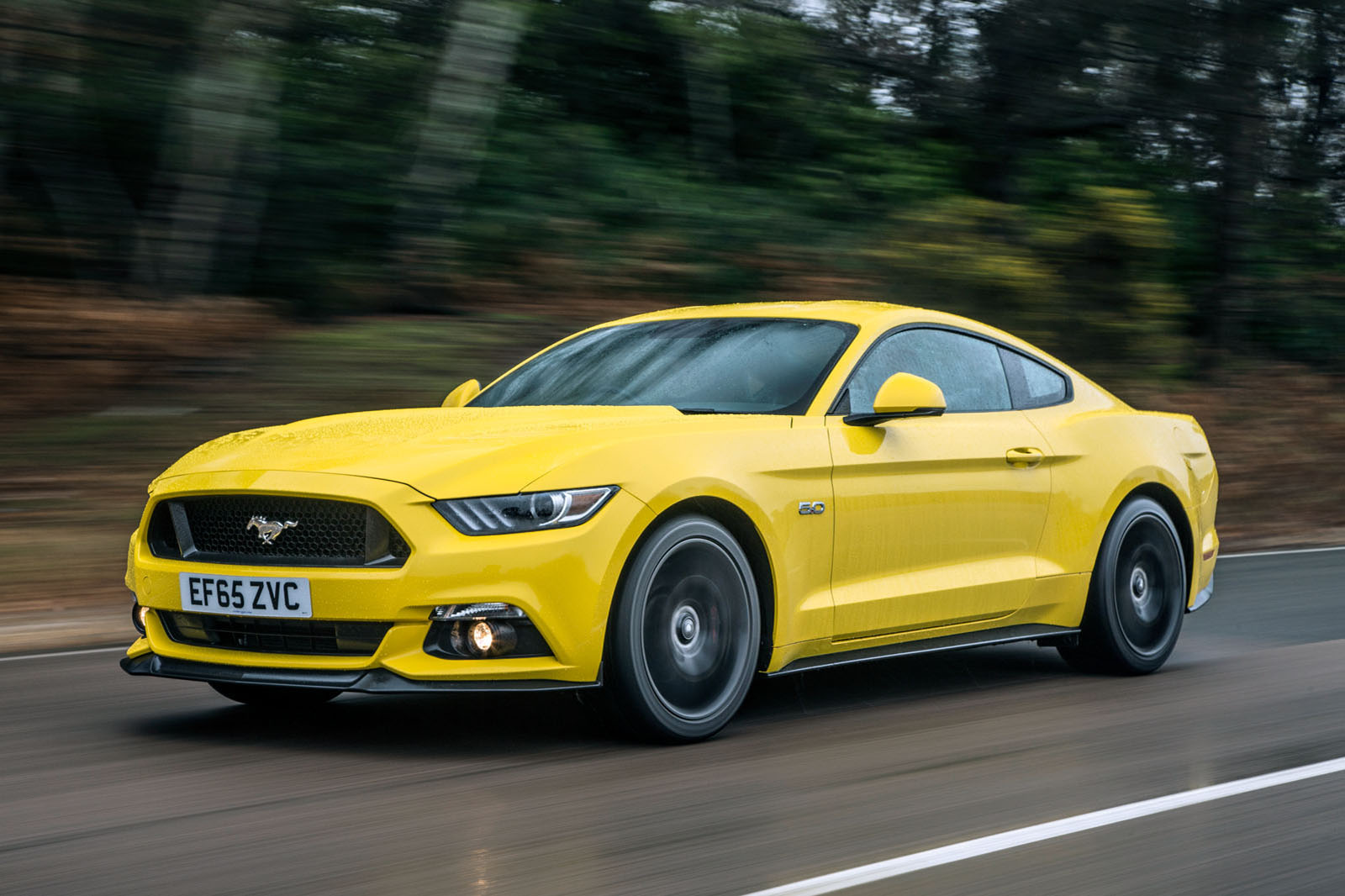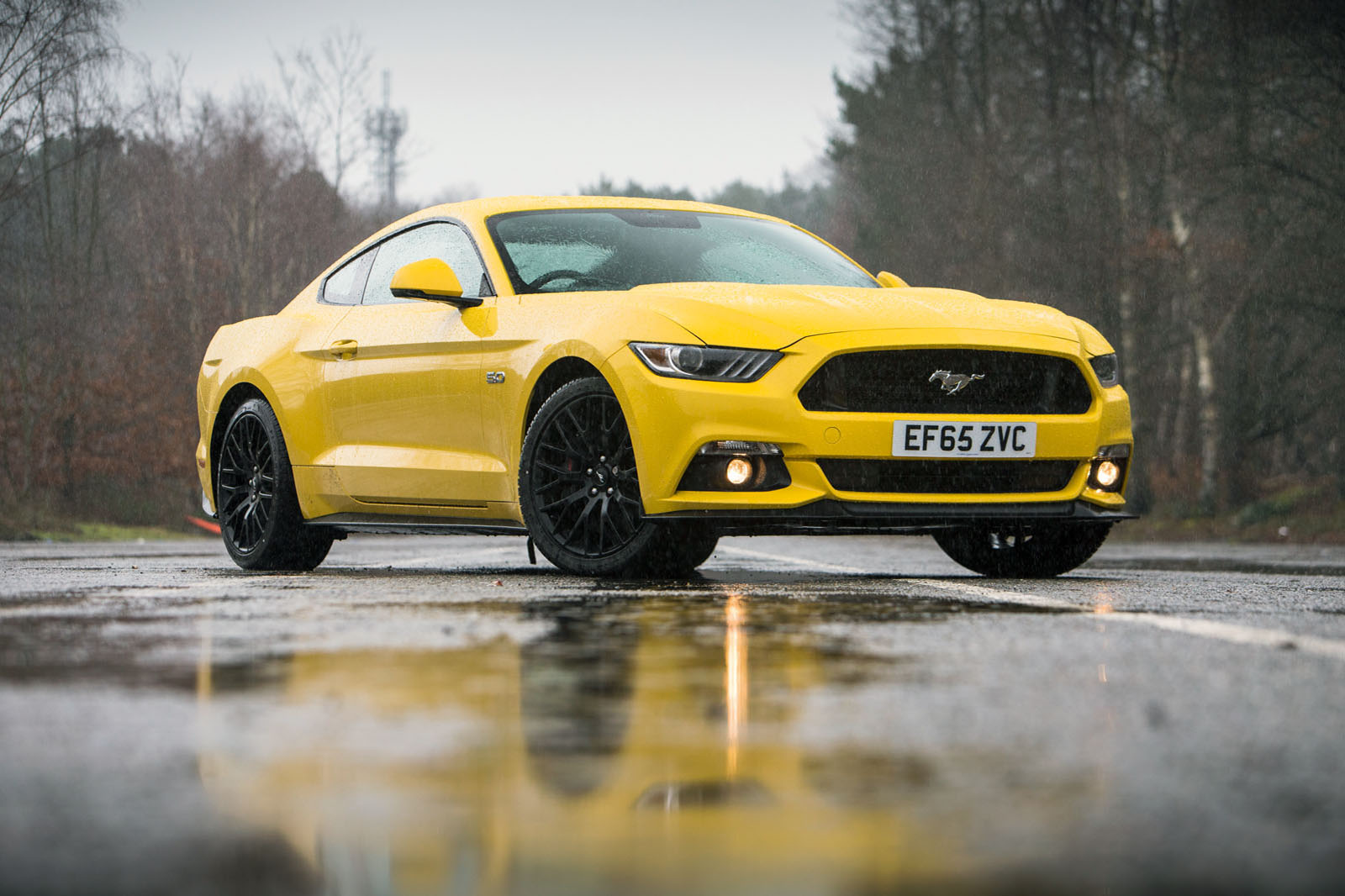It feels special and not a little surreal to finally be seated in a Mustang with the steering wheel on the correct side.
The model’s half-century of unvarying left-hookerism was unquestionably one of the things that made past versions seem alien and pigheadedly American when driven on British roads.
In making the adjustment, the car seems no less idiosyncratic, but its size and forthright sense of style are somehow easier to assimilate when contemplated from the right-hand side.
Affection for this new mid-Atlantic accent is helped along by a working knowledge of the cabin’s non-negotiables.
To be a proper Mustang, the car requires large, round dials, a symmetrical instrument panel and a tall but unimposing double-brow dashboard. These are all present and correct – and supplemented by Ford’s latest Sync3 infotainment system complete with an 8.0in touchscreen display, nine speaker audio system, DAB radio, USB and Bluetooth connectivity and smartphone integration.
The 8.0in colour touchscreen comes as standard with four shortcut zones for phone, media, climate control and — if you’ve ticked the right box — navigation. The absence of navigation as standard is noticeable on a £30,000 car, but Ford has twinned it with an uprated 12-speaker Shaker sound system as a £795 option bundle, so most Mustangs will be delivered with it on board.
Otherwise the Mustangs are well-equipped, with entry-level 2.3-litre EcoBoost versions getting a limited slip differential, electronic stability control, 19in alloy wheels, xenon headlights, auto wipers and lights, and power-folding mirrors on the outside as standard. Inside there is a reversing camera, dual-zone climate control, ambient interior lighting and electrically adjustable front seats.
Opt for the 5.0-litre V8, which most Mustangs ordered have been, and you get Brembo brakes, Electronic Line Lock, Launch Control and lots of badging showing you bought the 5.0-litre version and not the EcoBoost. A recent addition to the range is the Shadow Edition, which is only available with a V8 an includes unique bonnet stripes, alloy wheels, paint job and badging, plus rear parking sensors, climate controlled front seats and a Shaker Pro audio system with sat nav.
Think the Mustang is bereft of power then Clive Sutton might have the answer as they will tune and improve all variants of the Mustang. They offer four 'power packages' - the CS350 is designed solely for the 2.3-litre EcoBoost Mustang and includes a cold air intake system and a remapped ECU which helps the 'Stang pump out 313bhp. Got a 5.0-litre V8 Mustang and fancy an upgrade then for £3605 Clive Sutton will add a cold air intake system and give the ECU a remap to help it produce 449bhp, while going to the CS700 pack sees a supercharger, intercooler, quad exhaust and active exhaust system to the big Ford helping it breach the 700bhp mark. Topping the range at an additional £19,185 sees the CS800 get a Stage 2 Whipple Supercharger, high pressure fuel injectors to the package allowing the engine to punch out a scarcely believeable 800bhp.
Our test car had the uprated audio system and, although it isn’t as magnificent-sounding as the latest equivalents being fitted by the likes of Mercedes-Benz and Audi, it makes a powerful enough noise to just about drown out the V8 combustion soundtrack, should you want to.
The Sync3 touchscreen interface is a bit overcrowded with fiddly buttons and isn’t the liveliest display. But it isn’t hard to follow its control logic, and connecting a smartphone, via Bluetooth or USB, is painless. The standard reversing camera is good enough to make the optional £295 rear parking sensors unnecessary.
There’s a broad beltline of metallic finish and a lot of vinyl, but the conscious mix of old and new isn’t handled particularly flamboyantly. As Ford is fond of saying, the Mustang is designed – not styled.
In the US, this credo helps to keep the car in contact with its blue-collar reputation. The occasional premium touch notwithstanding, the Mustang is still intended as a performance car for the working man, not a delicate or effete sports car.


